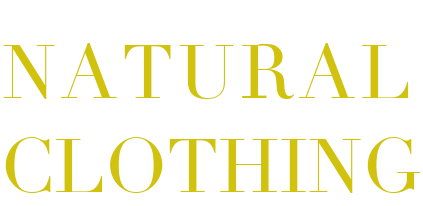If you’re looking to live a healthier, more sustainable lifestyle, start with your sleep. On average, we spend 1/3 of our lives sleeping and in our beds. We’ve all heard it before. But what many of you probably haven’t heard is that conventional mattresses are practically chemical sponges. Cleanup your sleeping routine with an organic mattress.
One of the best investments you can make is in the place where you spend 8+ hours of your day. Here, we’ll look at why you should be sleeping on a natural mattress, then we’ll look at the best organic mattresses that should be at the top of your list. So tuck in.

Why buy a natural, chemical free, organic mattress?
Conventional mattresses contain synthetic materials that are made with toxic chemicals. Mattresses using synthetic foam, synthetic latex, vinyl, and fire retardants leech toxic chemicals that can be absorbed through our skin as well as released into the air inside our homes. Organic mattresses don’t.
Why are fire retardants in mattresses?
By law, mattresses are required to pass a flammability test. The test ensures that the mattress does not burn too quickly or at a temperature that is too hot. This law was established in the 1970s during an uptick in mattress fires caused by cigarettes falling onto the mattress. The requirements are intended to slow the spread of fire, giving anyone in the area time to evacuate. The law does not require manufacturers to use chemical fire retardants, just that the mattress pass the standards. There are a number of effective fire retardants made from natural materials, such as wool, that can effectively pass. However, these natural fire retardants are not the industry go-to. Commonly, mattress manufacturers wrap the mattress core in a layer of textile that is treated with chemicals. Some of the most commonly used chemicals used to treat this ‘sock’ are extremely harmful to our health and the environment.

What chemical fire retardants are used in mattresses?
Fire retardants are barriers added to products like furniture, electronics, and insulation to meet certain laws, and of course, slow the spread of flames in the event of a fire. In mattress production, the fire retardants are usually applied to what’s known as a ‘sock’. The sock is a textile wrapped around the foam or mattress core. Here’s a long list of unrecognizable names that are some of the more common fire retardant chemicals that are applied to the mattress sock: magnesium hydroxide, borates, paraffins, aluminum hydroxide, organohalogen compounds, antimony, and decabromodiphenyl oxide. You should be more hesitant to lay in a bed of them than you are to pronounce them.
Boric Acid in Mattress Fire Retardants
Let’s focus on just a few of these for a minute. First, boric acid. Boric acid is commonly used as a pesticide. The CDC lists exposure effects of skin irritation (dermatitis), irritation to eyes and respiratory tracts, effects on the gastrointestinal tract, liver and kidneys, and possible toxic effects on human reproduction. They list ‘possible effects on human reproduction’ because they’ve tested boric acid on animals and know that it is not good for their babies. Boric acid is non combustible but does give off toxic fumes when exposed to fire. Ok, yikes, now let’s look at antimony.
Antimony in Mattress Fire Retardants
Antimony sounds like the name of a character in a Jane Austen novel. It is not, but it can be just as toxic. Exposure to antimony is related to negative effects on the heart, eyes, skin, respiratory system, and to developmental and reproductive problems. On the less serious (and definitely a little bit funny) side, exposure to antimony can cause headaches, dizziness, vomiting, diarrhea, and lack of sleep.
Flame retardant tests and regulations are often revisited and revamped, but have yet to regulate the chemicals used to meet them. You can read the current electronic Code of Federal Regulation here.

What is a foam mattress made out of?
Synthetic foam mattresses, like those made with polyurethane foam and memory foam, are primarily made from petroleum. If you’ve ever owned a foam mattress for a length of time you may notice it shrinking. If you’ve ever owned a foam mattress for a length of 10 years…you may notice it’s half the size it was when you bought it. It’s not squishing together or flattening. Mattress retailers may tell you that it’s ‘breaking in’ but it isn’t doing that so much as breaking down. It’s breaking down and releasing chemicals into the air in the forms of gas and dust. This is called off-gassing. The chemicals used to make the foam mattresses break down and become VOCs. A VOC is a volatile organic compound, which is a compound containing carbon that is small enough to be inhaled by humans.
What chemicals does a foam mattress release?
So what VOCs does synthetic foam release? Chlorofluorocarbons, toluene, formaldehyde, benzene, methylene chloride, trichloroethane, naphthalene, and perfluorocarbons. Well that sounds healthy. Let’s run through them quickly. Chlorofluorocarbons are greenhouse gasses that, with overexposure, can cause loss of concentration, dizziness, central nervous system depression, and cardiac arrhythmia. Toluene is a neurotoxin. In low to moderate levels of exposure through inhaling, toluene can cause confusion, tiredness, memory loss, nausea, and loss of appetite, hearing, and the ability to see color.
Formaldehyde in Foam Mattresses
Mmk, formaldehyde sounds familiar, it will help preserve us right? Nope, formaldehyde exposure can cause irritation of mucous membranes and eyes, a burning sensation in the throat, headaches, and difficulty breathing. It is also associated with the development of childhood asthma and a known human carcinogen. Further, it is known to cause a number of cancers including leukemia and brain cancer. These last two are more closely associated with those who have experienced workplace exposure to formaldehyde. Formaldehyde is also often used in wood treatments and resins. It can also off-gas from these products and did so infamously in a case occurring in 2006. Residents of the US Gulf Coast were displaced by Hurricanes Katrina and Rita and relocated to travel trailers and temporary homes. In these homes they reported nosebleeds, breathing difficulties, and headaches. Ok, formaldehyde is no good.
Benzene in Foam Mattresses
Sorry this is really turning into a downer! We’ll just cover one more. Let’s look at benzene. Benzene is a known carcinogen. It is also known to cause bone marrow abnormalities. Benzene is associated with acute leukemia, aplastic anemia, and cardiovascular disease. Just a reminder, it is now 2018. Way back in 1948, the American Petroleum Institute declared “it is generally considered that the only absolutely safe concentration for benzene is zero”. Zero. Keep in mind these are the guys who make money off of this stuff. So, why would manufacturers still use synthetic foam? Synthetic foam mattresses are cheap and lightweight, allowing manufacturers to save money on production and shipping promotions. Ok, let’s move on so you can sleep easy tonight. Let’s look at some of the best natural mattress options on the market.

The best natural, non-toxic, and chemical free mattresses on the market
We didn’t want to scare you with chemicals and not leave you with a solution. There are a number of comfy, flame resistant, chemical free mattresses available. So rest easy, and read on.
Avocado Green Mattress
materials: organic cotton, sustainably sourced natural latex, New Zealand wool
benefits: 100 night trial, free shipping & returns, handmade in California, pressure-point support
Avocado Green Mattresses are also GREENGUARD Gold Certified by UL Environment and come with a 25 year warranty. Amazingly, less than 1% of all mattresses meet the GREENGUARD Gold certification standards.
Explore Avocado Green Mattress Here
Sleep On Latex
materials: natural latex, GOTS certified organic cotton and organic wool
benefits: free shipping and returns within the contiguous US
Sleep On Latex beds are assembled, inspected, and packed to ship all right in a single factory in Chicago, IL. The company is run by two brothers dedicated to bringing you the best natural sleep out there. In addition to natural latex mattresses, Sleep On Latex offers natural latex mattress toppers and pillows.
Zenhaven by Saatva
materials: natural American Talalay latex, organic New Zealand wool, organic cotton
benefits: 120 night trial, free white glove delivery and mattress removal
Zenhaven beds come with a non-prorated warranty of 20 years. The mattress is certified with Oeko-Tex Standard 100. The Oeko-Tex Standard 100 is an internationally recognized standard for textile purity and safety.
Explore Zenhaven by Saatva Here
Plushbeds
materials: organic cotton, organic natural latex, organic wool
benefits: 100 night trial, free shipping & returns, 3 easy to adjust comfort layers, eliminates pressure points
Plushbeds are also GREENGUARD Gold Certified and come with a 25 year warranty.
Once you have your bed all squared away, check out the Natural Clothing Directory for natural fiber pajamas and linens to get you sleeping soundly the natural way.













